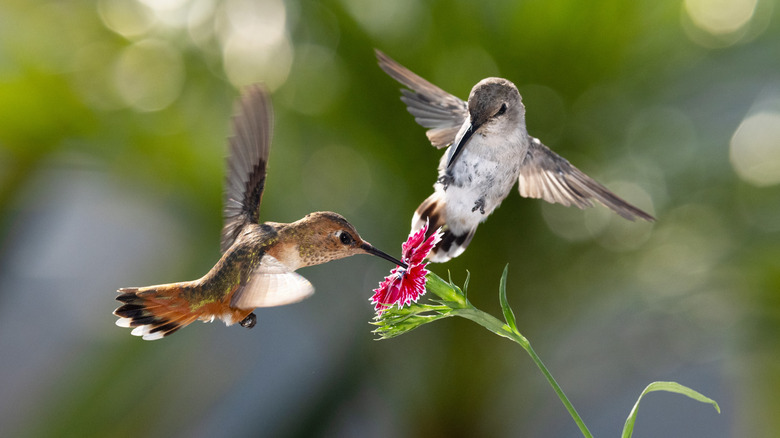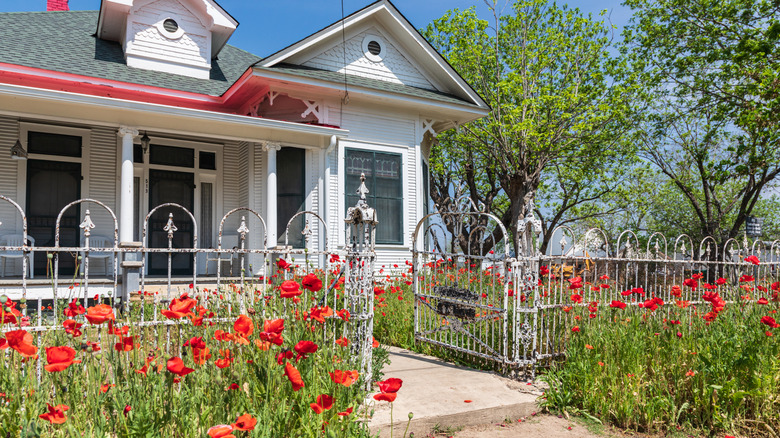8 Must-Plant Flowers For Attracting Hummingbirds If You Live In Texas
If you don't smile when you cross paths with a tiny, zippy hummingbird, you probably didn't see one. With iridescent feathers, darting moves, and the ability to hover mid-air like helicopters, these itty-bitty cuties spark instant joy. In Texas, where the weather can swing from dry and scorching to rainy and cold within the same week, hummingbirds are regulars in our gardens, which makes picking flowers that can withstand hot Texas summers important. Whether you live in the Texas Hill Country, near the breezy Gulf Coast, or out west in the desert, your garden can become an even more popular stomping ground for these dainty birds. All it takes is the right kind of flowers to lure them in.
Texas is a huge state, spanning four major USDA growing zones, from zone 6 in the Panhandle to the subtropical heat of the south's zone 10. Regardless of your growing zone, flowers should have a few things in common to coax the nectar nibblers to your garden. Hummingbirds love tubular-shaped blooms, especially native ones that have brightly colored blooms in reds, oranges, yellows, and pinks. Native plants such as the wax mallow (Malvaviscus arboreus) are perfect in Central and West Texas, while firebush (Hamelia patens) thrives in the southern Texas heat near the coast. To roll out the welcome mat, your garden should be more than pretty. It needs plants that can handle the unpredictable Texas weather while packing a powerful nectar punch for these energetic little birds to feast upon.
Texas flowers that bring all the hummingbirds
While some popular flowers won't attract hummingbirds, native Texas plants are perfect. They're hardy, low-maintenance, and loved by pollinators — not just hummingbirds, but also bees, butterflies, and the occasional lizard. Plants in every Texas zone should be drought-tolerant, like the trumpet honeysuckle (Lonicera sempervirens) and crossvine (Bignonia capreolata). They're both climbing vines with clusters of red or yellow blooms. The honeysuckle flowers grow downward, a favorite direction of hummingbirds.
For showy flowers, the wax mallow is a colorful, bright red shrub with hibiscus-like blooms that form loose tubes. It blooms from May to November, giving you more face time with your feathery visitors. The scarlet rosemallow (Hibiscus coccineus) has deep red petals that will carry you from July into September. Cedar sage (Salvia roemeriana) is the plant that keeps on giving. Starting in early spring, the perennial shows off a plethora of crimson flowers through summer and continues with sporadic blooms until August. One caveat, cedar sage does need partial shade to survive, but that won't deter hummingbirds from coming their way. For a mix of colors, Texas lantana (Lantana urticoides) blooms bright orange, red, and yellow flower clusters that hummingbirds can't resist. And for fans of lavender colors and weather indicators, the Texas barometer bush (Leucophyllum frutescens) is a showy bloomer, especially as the humidity changes. These flowers are another low-maintenance way to add curb appeal to your landscape.

